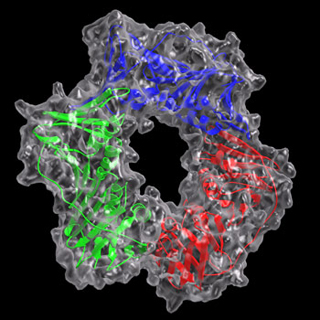
The role of the Rad checkpoint complex was inferred from the 3-D structure predicted by comparative modeling at Lawrence Livermore National Laboratory. The Rad complex delays cell division to allow time for DNA repair to take place. (Image courtesy of the U.S. Department of Energy Genomics: GTL Program.)
Instructor(s)
Prof. Bruce Tidor
Prof. Jacob White
MIT Course Number
20.482J / 6.581J
As Taught In
Spring 2006
Level
Graduate
Course Description
Course Features
Course Description
This subject describes and illustrates computational approaches to solving problems in systems biology. A series of case-studies will be explored that demonstrate how an effective match between the statement of a biological problem and the selection of an appropriate algorithm or computational technique can lead to fundamental advances. The subject will cover several discrete and numerical algorithms used in simulation, feature extraction, and optimization for molecular, network, and systems models in biology.


